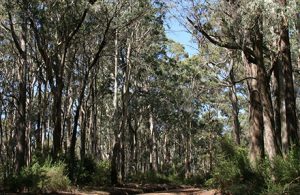State Governments make decisions for regional areas of southern states, some good, some neutral and some poor. Some decisions are made without adequate consultation with affected regional people and communities. Source: John O’Donnell
We have the right of free expression in this country. I believe that some of the issues of concern with regards to decisions made and being made by state governments include:
- In NSW, I believe, establishing mega agencies and ministerial clusters has not delivered adequate consideration of regional issues/ impacts. The recent Koala SEPP is a perfect example of this. It was introduced late on 20 December 2019 just before Christmas, during the wildfires and the guideline was introduced after the Koala SEPP started on 1 March 2020, without industry, farmer or forestry review. The impacts across regional areas including farming businesses, are huge. Others have raised this issue.
- Acquiescence to green agendas as an aid to win votes in the big cities, in some cases. I expect more to come. Country people know what these issues are and have suffered from a number of them.
- Continuing focus on inadequate hazard reduction in forested areas, resulting in high fuel loads and continuing massive bushfires. On information available to me, the average fuel reduction burning in NSW between 2010 to 2019 was 153,291 hectares. I am not convinced the state bushfire inquiries will adequately address this important issue, there are 27 million hectares of forested area in NSW.
- In regional NSW, I believe that there is over regulation of regional areas. The restrictions on cool hazard reduction burning across landscapes are mind boggling. There is a large list of individual flora species, fauna species and ecological communities, many disturbance dependent. This policy environment reinforces the shift towards more widespread high intensity fire regimes in these same areas where managed fires are restricted.
- The current approach to inadequate hazard reduction burning impacts on the health of forests, as organic matter builds up, eucalypts decline. Look at the tree crowns and assess the dead branches, sick crowns and epicormic growth where fire hasn’t occurred for long periods. This issue is of national importance and is poorly understood or in some cases ignored. The time has come to use the research information tabled already in relation to forest fire, health, dieback and fauna and undertake cool burning in the required forests.
- Wildfires in 2019/ 20 have had huge impacts on communities, individuals, fire fighters, infrastructure, forest, fauna, water quality, waterways, fish, greenhouse gas generation, air quality and heritage sites. Regional communities have and are being very badly impacted. None of these factors haven’t been adequately considered in an integrated way before, to understand the large and broad impacts of wildfires. An integrated data base is needed to support increased hazard reduction programs. It is understood over 1 billion animals have died in the 2019/ 20 wildfires, in NSW alone. Cool burning has much less impacts on each of the above factors, much less.
- What is happening with the forestry industry in regional Victoria is continuing the social and economic destruction of regional communities.
- In NSW, trying to lease off pine plantations to pay for infrastructure, for much less than the true value, doesn’t make sense. Luckily, this didn’t happen, as the short-term gain would have meant long term pain for the state, regional areas, regional development and industries. I note that NSW had contributed a considerable amount of funding to forest reestablishment following the wildfires.
- Many small towns are going backwards and continuing to do so without sound consultation, innovative approaches and in some cases funding assistance.
- Some of the implemented Shire amalgamations in regional NSW caused a lot of unrest and in some cases are still simmering. I have family members in one of those Shires.
- At times, state governments are not adequately listening and consulting with regional communities, industries and industry groups and this can result in poor decisions, impacting heavily on regional areas.
- Regulatory approaches often backfire in the country areas, with reduced landholder interest/ investment in native tree planting, corridors for fauna and native plantations.
I ask the important question, are there other ways to manage these issues and for our states to move forward, address the concerns above, be sustainable and utilise all the opportunities available to progress rural communities and the state as a whole?
One potential way would be to establish a new regional state in regional NSW and Victoria, maybe called Opportunia, including the areas outside Sydney, Newcastle, Wollongong (NSW) and Melbourne.
In rough terms from figures I extracted last night, the gross domestic product of these two combined regional areas would be $155 billion per year, with the new NSW at then $528 Billion and Melbourne then $369 billion.
Opportunia would have a bigger GDP than South Australia, smaller than Queensland but be blessed with opportunities to develop similar industries and opportunities across the two regions and utilise the Inland Rail project to full advantage and hopefully reduce regulation. With a can-do attitude, focussed approach and employing government personnel in regional areas and with good consultation mechanisms, social, economic and environmental outcomes would be optimised.
Sorry folks, when I prepared this it was April 1 and maybe I am joking, but am I?
Another simpler way would be to address the above issues of concern raised above. I believe that there is a big opportunity there for government.
I ask the question; will this happen?






